- Food & Drink
- What's On
- Things to Do
- Air Like Wine
- Reasons to Visit
- Where to Stay
- Our Top Picks
- Need to Know Information
- News and Features
- Coming Up
You are here: Home > Air Like Wine
A Walking Tour of Weston's Hidden Stories & Seaside Secrets including three piers, Beatles Rock and a Banksy!
Breathe in the past, wander through the present. Discover Weston-super-Mare as you’ve never seen it before — See where the original booze cruise boats docked, recreate the iconic Beatles Rock photo, stare down a giant tiger mural and climb to the ruins of an ancient hilltop fort. You'll also set-foot on the former ladies-only beach where men were once barred, join in Weston's famous carrot debate, see forgotten islands, visit the haunts of famous people and discover a stunning view which only the locals know.
Route Length: Approx 120 minutes
Stops: 16 (including two optional stops - up steep steps and on rough tracks). 14 stops without the bonus stops.
Difficulty: Easy - Moderate (But steep steps if visiting Weston Woods on the two bonus stops)
Start Point: The Tropicana, Marine Parade Finish Point: Weston Museum (Open Tuesdays to Saturdays only)
🍷 Follow it yourself or join Tony's FREE Guided Tour (Saturdays during August)
You can explore the Air Like Wine walking trail at your own pace - but for the full experience, join Tony’s free guided tours which are every Saturday morning this August!
Tour Details
When? Saturdays in August, starting at 10:30am. (August 2, August 9, August 16, August 23 & August 30).
Where? Meet outside The Tropicana, Weston-super-Mare seafront (BS23 1BE)
Look for Tony! He’ll be in a bright pink Visit Weston T-shirt or a navy jacket - and carrying his signature yellow umbrella so you can’t miss him!
How long? Around 2 hours
Cost? Totally FREE
What to Expect Tony’s version of the tour might take a slightly different route than the one online, but don’t worry - you’ll still see all the highlights and get a whole lot more: extra stories, local insights, and hidden gems you’d miss on your own.
Drop In / Drop Out? No Problem!
We’d love you to stay for the full experience, but if you need to join late or leave early, that’s totally fine. Just find Tony and hop in or out whenever it works for you.
Accessibility: Most of the route is wheelchair and pushchair friendly, with just one stop that involves steps. Can’t make it up? No stress - there’s a nearby café overlooking a rocky beach where you can grab a coffee or ice cream while Tony leads the group around and rejoins you shortly after.
Bringing a Dog? Well-behaved dogs on leads are very welcome! Just note that dogs won’t be allowed inside the final stop: Weston Museum, where we’ll view Banksy’s famous Pinwheel.
Good to Know (aka the Small Print)
Who’s it for? Suitable for adults, teens and kids - but probably not ideal for toddlers.
What to wear? Comfortable footwear and weather-appropriate clothing
What to bring? Water, sunscreen, and anything else you need for a couple of hours outdoors.
Important note: We’ll be crossing a busy road, so please stay alert.
Cancellations: We aim to run the tour every Saturday in August but may have to cancel due to unforeseen issues. Check online for the latest updates.
Whether you’re local or just visiting, Tony’s guided tour is the perfect way to soak up the sights, stories, and salty sea air of Weston-super-Mare. Come along - you’ll be glad you did!
And if you're doing the walk on your own, here's all you need to know.
Follow the Air Like Wine Map
Click here to follow the Air Like Wine Map and follow the purple hearts
1. The Tropicana: From Beauty Queens to Banksy
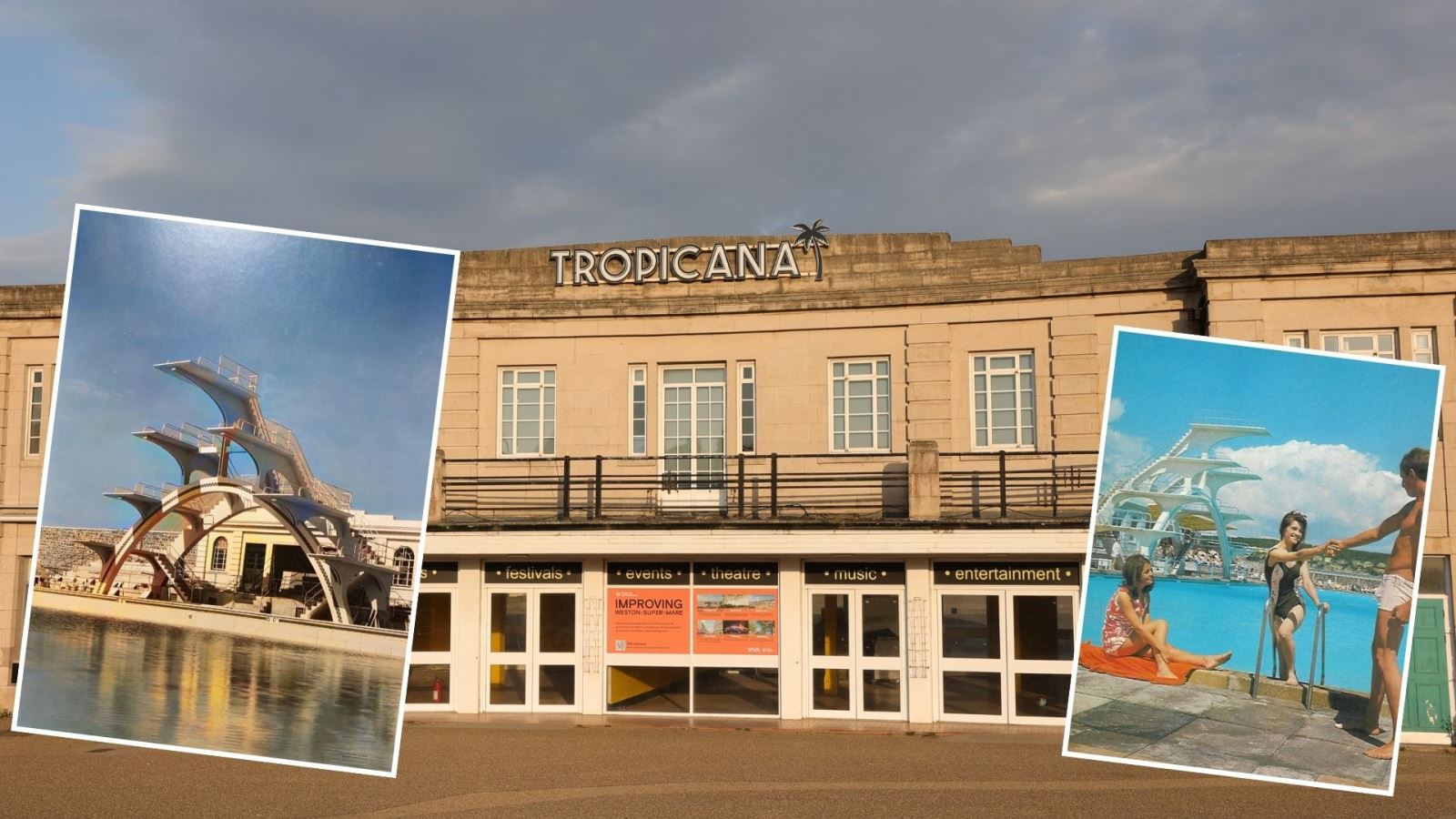
We begin at the Tropicana, one of Weston’s most iconic landmarks. Opened in 1937 as an outdoor swimming pool with Europe's highest diving stage it also became known for glitzy beauty contests — with none other than Diana Dors placing third here in the 1940s.
After closing in 2000, it was famously reborn in 2015 as the site of Dismaland, Banksy’s dark twist on Disneyland — a “bemusement park” that drew over 150,000 visitors. In 2022, it welcomed another artistic marvel: See Monster, a decommissioned oil rig transformed into a multi-storey art installation, which attracted half a million visitors — that’s more than five full Wembley Stadiums!
The Tropicana is being redeveloped in 2025 and is set to become a 5,000-capacity live music venue.
2. Revo Kitchen: A UK Record-holder
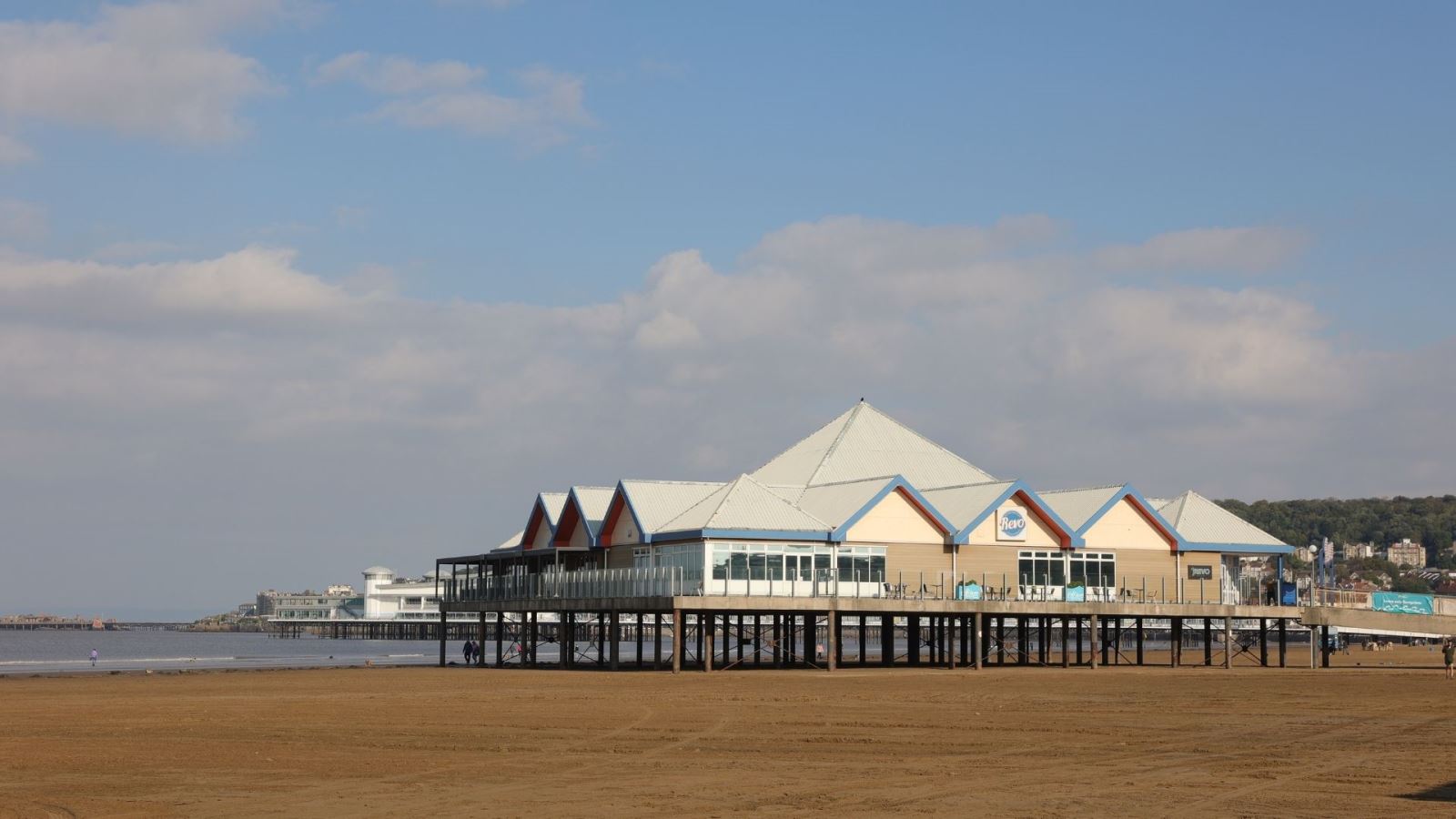
This is England’s newest purpose-built pier, opened in 1995 to house the Weston Seaquarium. Although just 90m (295 ft) long, it gives Weston the distinction — alongside Blackpool — of being one of only two towns in the UK with three piers.
It’s not quite the shortest - that honour goes to Burnham-on-Sea just down the road or a number 20 bus ride away. What this pier lack in feet and inches, it more than makes up for with stunning vistas. Enjoy a bite at Revo Kitchen, play some glow-in-the-dark crazy golf, and take in the dramatic sweep of the coastline.
From here you can see, looking to your left,
Brean Down: The Bouncing Bombs (and dangerous backfires)
.jpg)
Brean Down is a dramatic National Trust limestone headland jutting out to sea. Storms destroyed the 1864 foundations for a grandiose trans-Atlantic harbour, though a fort built 13 years later to discourage Napoleon has survived along with many of its WW1 and WW2 additions.
It served as a secret military test site — and was one of the places where Barnes Wallis's experimental 'bouncing bombs' were tested. These prototypes, the predecessors to the bombs used in the legendary Dambusters Raid, were designed to skim across water before striking their targets. But not all the early tests went to plan — some bombs bounced back towards the launch site causing chaos and a few close calls. Visitors to the fort can still see the rails from where weapons were launched.
To get to Brean Down it's an 8-mile walk from Weston along the specially created Brean Down Way footpath and cycle route and is well worth the effort. But don’t try short-cutting over the mudflats; you’re likely to end up needing the RNLI !
Looking straight ahead lies
Flat Holm: A landmark in radio history
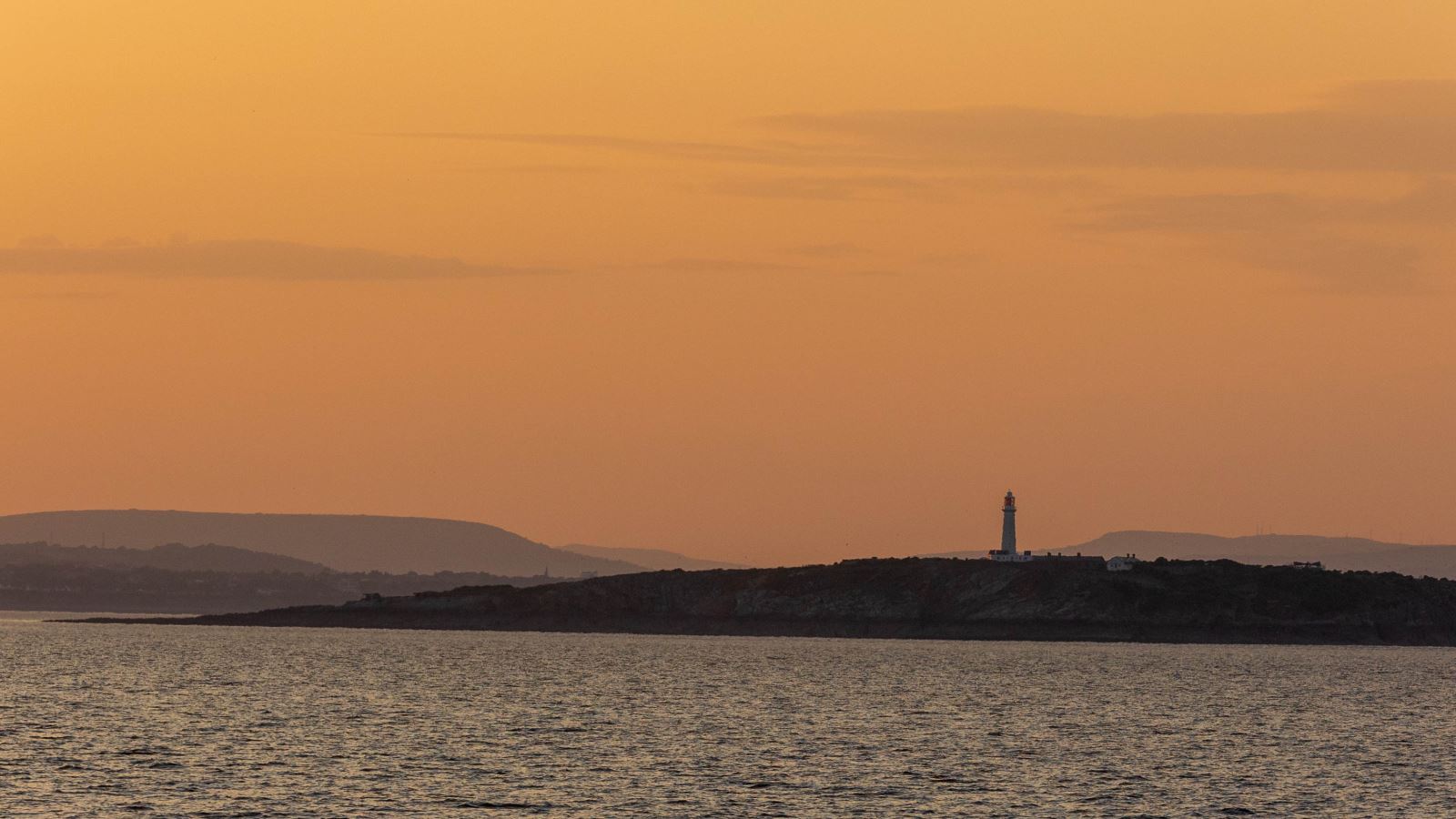
Out in the channel lie two islands: Flat Holm and Steep Holm. In 1897, Italian inventor Guglielmo Marconi made history by sending the first wireless signal across water from Flat Holm to Lavernock Point in Wales — a moment that changed the world.
After that success Marconi and his team rushed to Brean Down Fort where they set a new record of almost ten miles with another wireless transmission to Lavernock Point.
Flat Holm's history also includes being a retreat for monks as well as becoming an isolation camp for cholera victims in order to protect the mainland from the disease.
Steep Holm
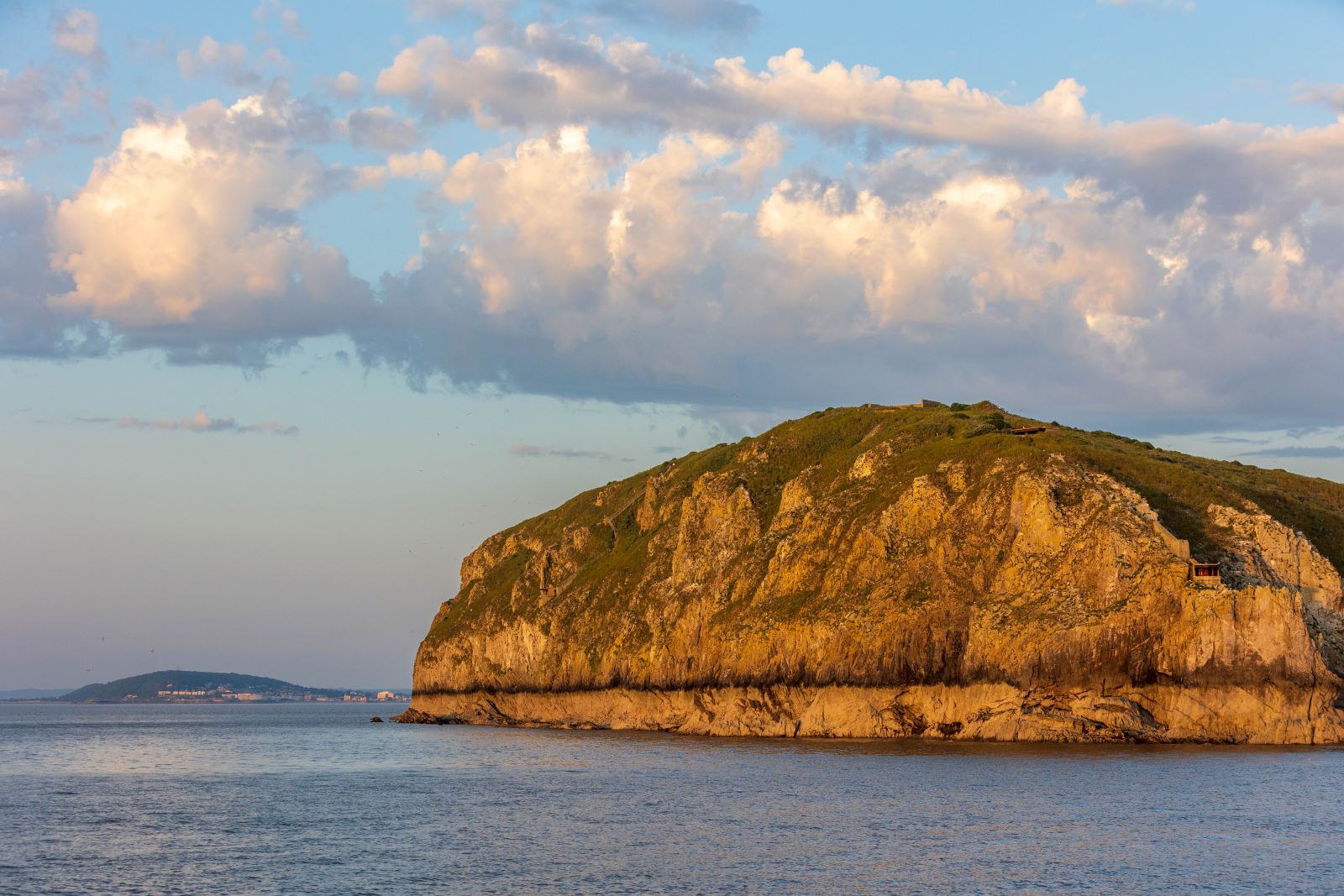
Steep Holm, unsurprisingly is the taller of the two islands. The Victorians fortified this island with six gun batteries, complete with cannons, which to this day remain largely intact and can be seen on occasional day trips from Weston-super-Mare when tides and sea conditions align. There's shelter and a small shop on the island but don't expect a luxury liner to get there - the boat is more like a motorised high-speed dinghy!
3. The Grand Pier: Biggest Fun
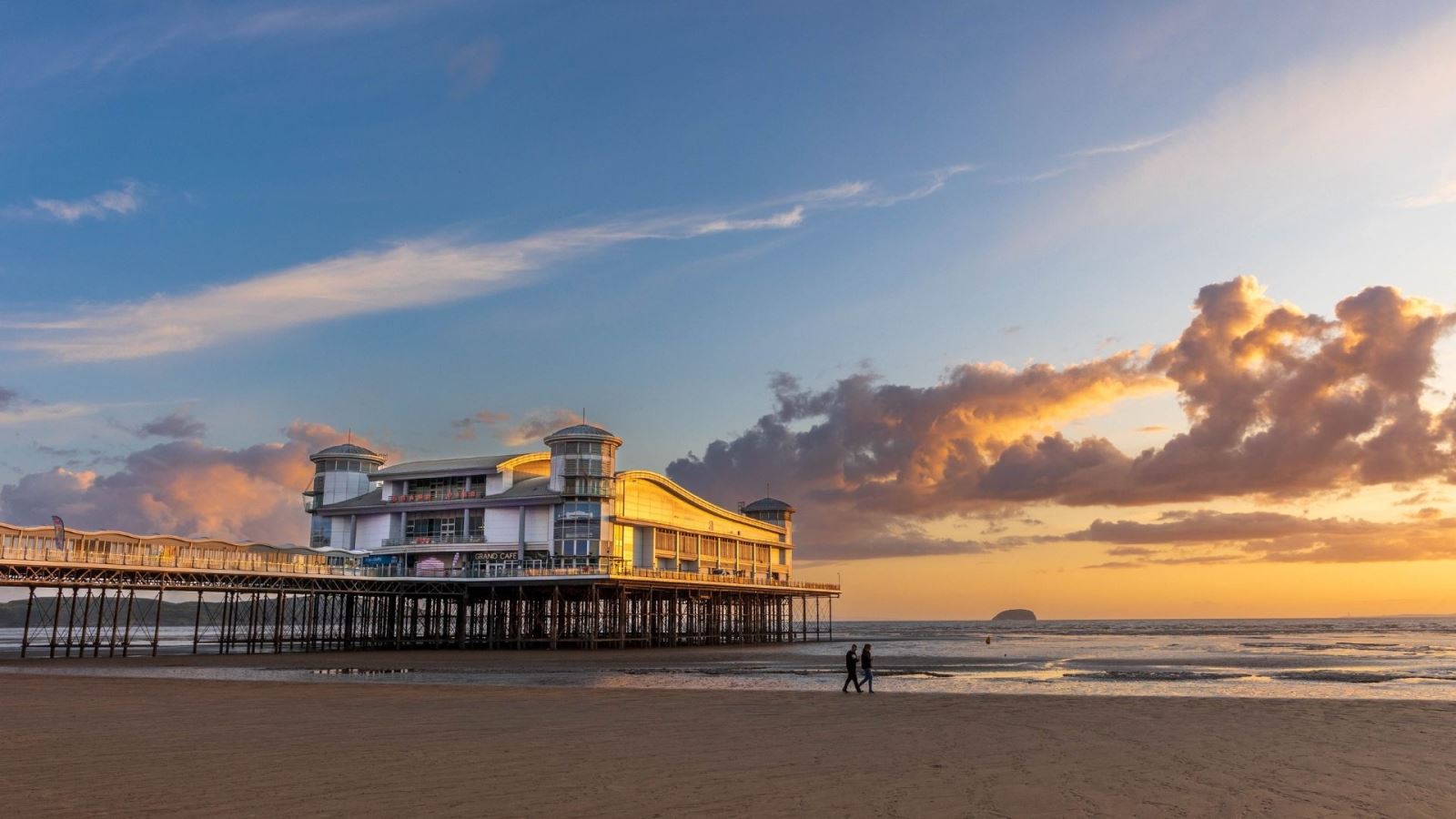
Weston’s Grand Pier is both a beloved attraction and a survivor — rebuilt after fires in 1930 and again in 2008. The latest incarnation opened in 2010 and is packed with arcades, go-karts, dodgems, and fun..
It originally opened in 1904 as an attraction and entertainment venue - with a 2,000 seater pavilion - and was soon extended with a view to it becoming a docking station for ferries from Wales. However that plan was shortlived as a combination of tides and strong currents made docking unsafe and in 1926 amusements were added for the first time.
On sunny days, Weston beach comes alive with picnics, sandcastles and donkeys. Donkey rides have been a fixture here for over 100 years.
Visitors from the Midlands have long called Weston “Birmingham-on-Sea,” and thousands still arrive today for day trips and annual holidays.
4. Street art - Regent Street

Regent Street is a great place to start admiring some of Weston's vibrant street art scene. On this road you will spot a giant tiger on your left as well as an Oriental street scene. Keep your eyes open as you continue this tour and you might find a giant cockerel staring down at you. As you follow our tour also look out for seaside donkeys high up on a wall and you might also become become submerged in an underwater scene as you walk by the tall Weston College building. To take a separate Street Art walk click here.
5. Silica: Weston's Shimmering Carrot
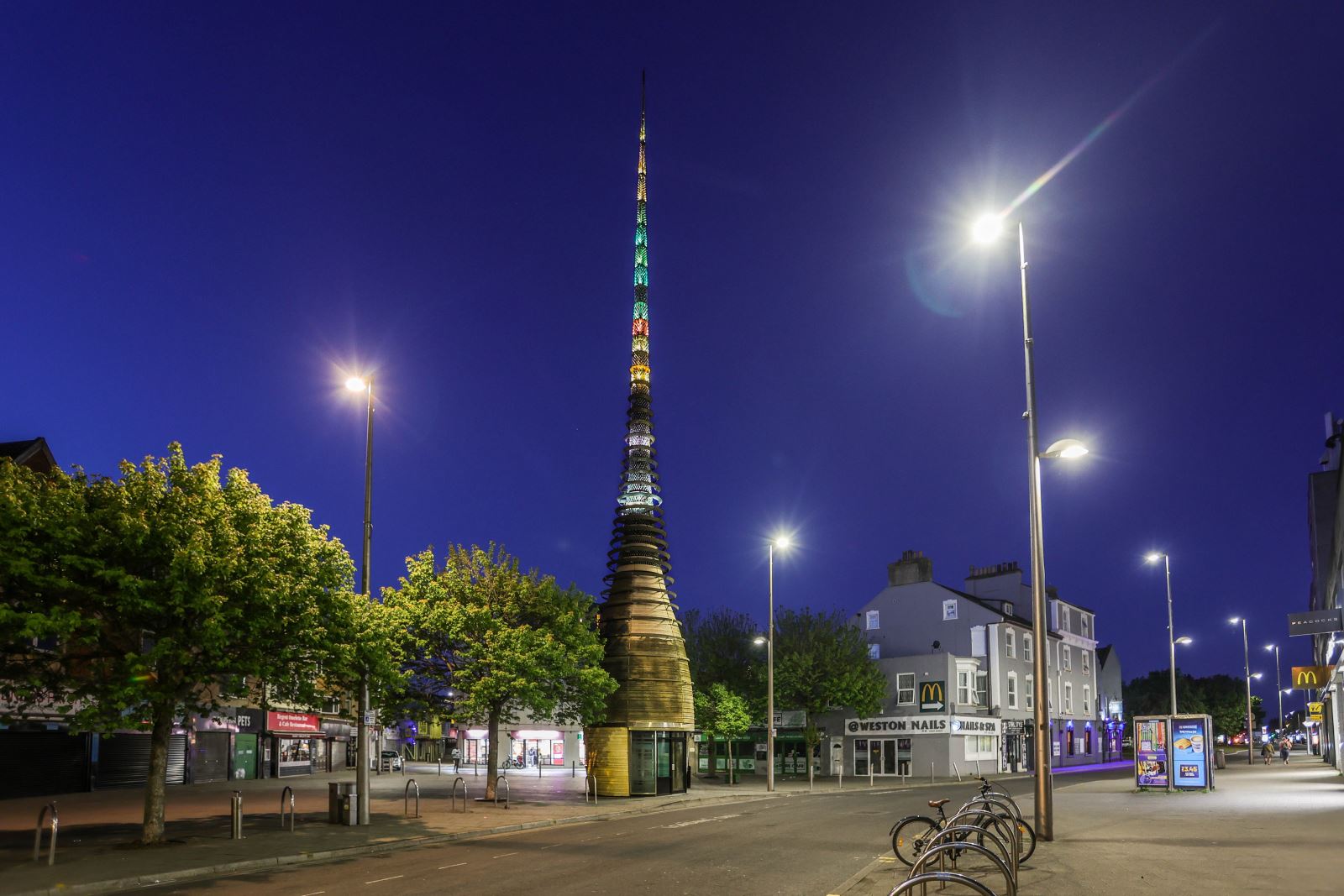
Big Lamp Corner was also known as Gossip Corner back in the day. It is now dominated by The Silica which has been dubbed The Carrot’ or ‘The Parsnip’ by locals on account of it looking like a giant vegetable. It is perhaps Weston’s most controversial and overlooked attraction – but it shouldn’t be. This 30-metre tall tower, comes alive at night, lighting up spectacularly and is definitely worth coming back to see after dark. It has 6,000 glass prisms and lights up in a variety of programmed colours. Installed in 2006, it represents Weston’s sand, water and light. It is the work of artists Wolfgang Buttress and Fiona Heron. It was initially designed as a bus shelter, kiosk, public artwork and electronic information display, all rolled into one. After a period in the doldrums, it has now been returned to being an information provider with touch screens for the public to help them find tourist information. Join in the great Weston debate. What would you call it? The Carrot, Parsnip or The Silica.
6 The Plaza Cinema: Stage to Stars
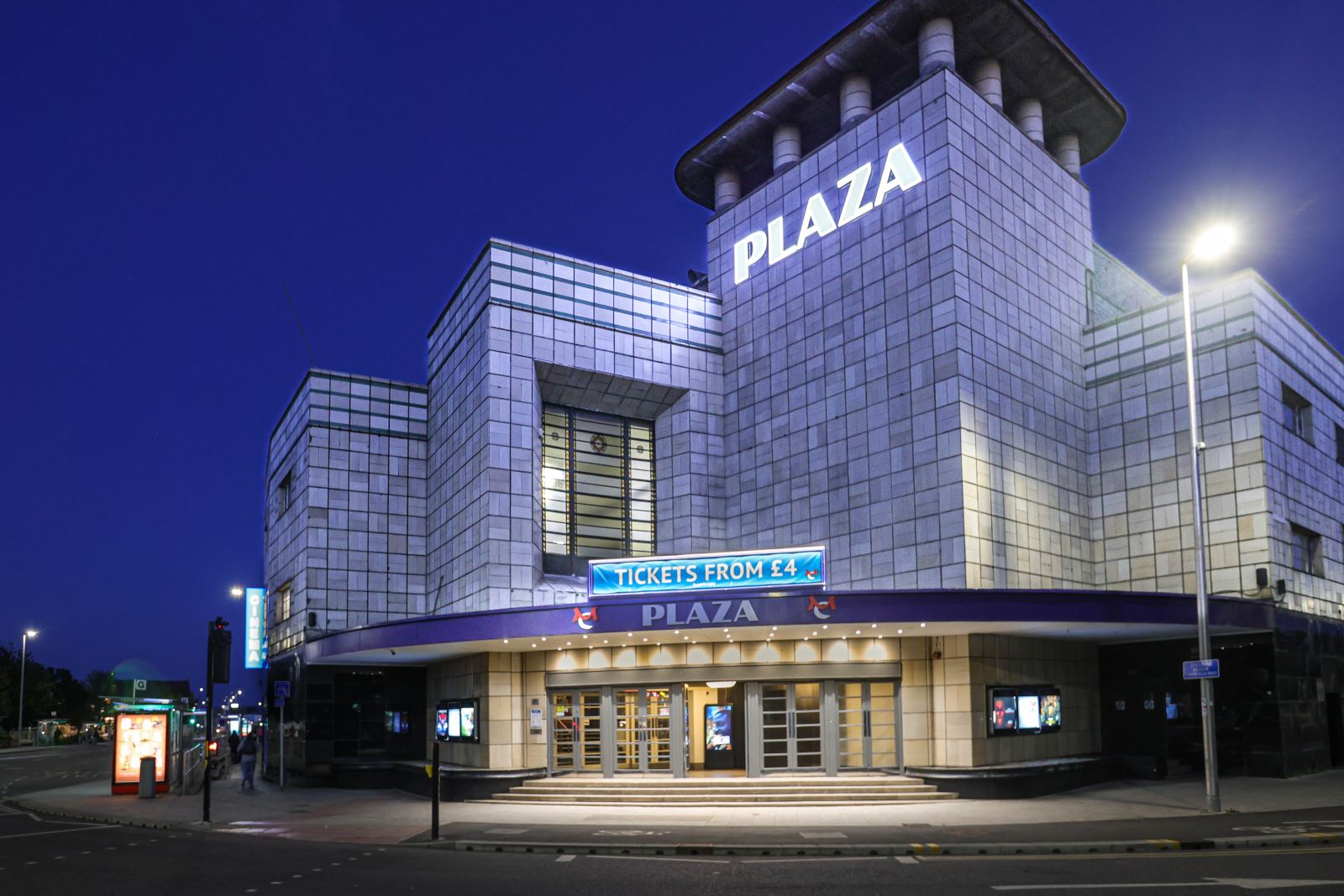
Opened in 1935 as the Odeon Theatre, this historic venue hosted a glittering array of 1960s bands — including six consecutive nights of The Beatles. There are now only two cinemas in the country which retain their original Compton pipe organs in working condition. This is one of them and it makes a superb sound. The colourful music-maker rises from the pit and with its combination of magic buttons, pedals and keys entertains modern audiences with popular retro-performances. If you get the chance to catch one of these flicks with a Compton performance, it is well worth the effort.
7 Olea and a tribute to a true Olympic Legend
This town centre bar honours one of Britain’s greatest Olympians. Paolo Radmilovic — known locally as Raddy. A four-time gold medallist spread across six Olympic Games (1908–1928), he held the national record until Sir Steve Redgrave surpassed him in 2000. Raddy once ran this very pub, following in his family’s footsteps.
His story is incredible — from winning water polo gold in front of hostile Belgian crowds in 1920 (police had to guard the team!) to being inducted into the International Swimming Hall of Fame. He’s buried in Milton Road Cemetery.
8 Knightstone Island & Dr Fox’s Tea Rooms: Air Like Wine and wellness by the waves
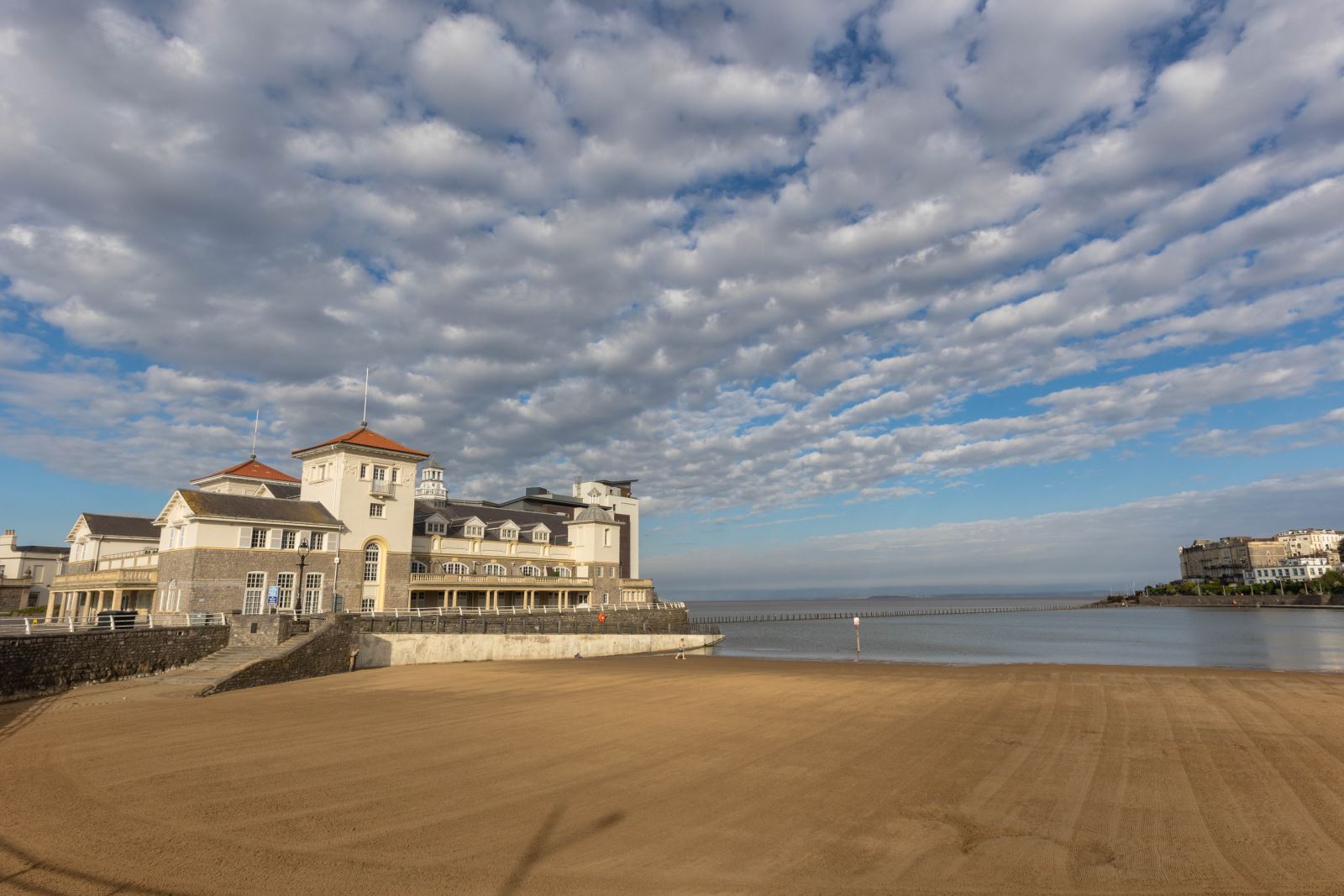
Weston-super-Mare’s prominence as a thriving seaside resort began in Victorian times when people flocked to the town in their droves to sample magical healing powers. The town was said to have Air Like Wine and became a magnet for people seeking health breaks.
With its fresh sea air and saltwater bathing, it was regarded as a health spa by doctors who advocated the benefits of drinking and bathing in salt water and inhaling the seaside air. The combination encouraged people to escape from their smog-filled factories and cities and head to Weston for what would nowadays be called an annaul healthy wellness retreat.
Knightstone's repuation as a health spa started in 1820 when John Howe bought the island for £200 and opened hot and cold saltwater spa baths.That repuation continued when Dr Edward Long Fox, a pioneer in the treatment of physical and mental disorders, set up a recuperation centre on Knightstone Island in 1830. Dr Fox’s Tea Room on the island is named in his honour.
9) Anchor Head Cove - Ladies Only
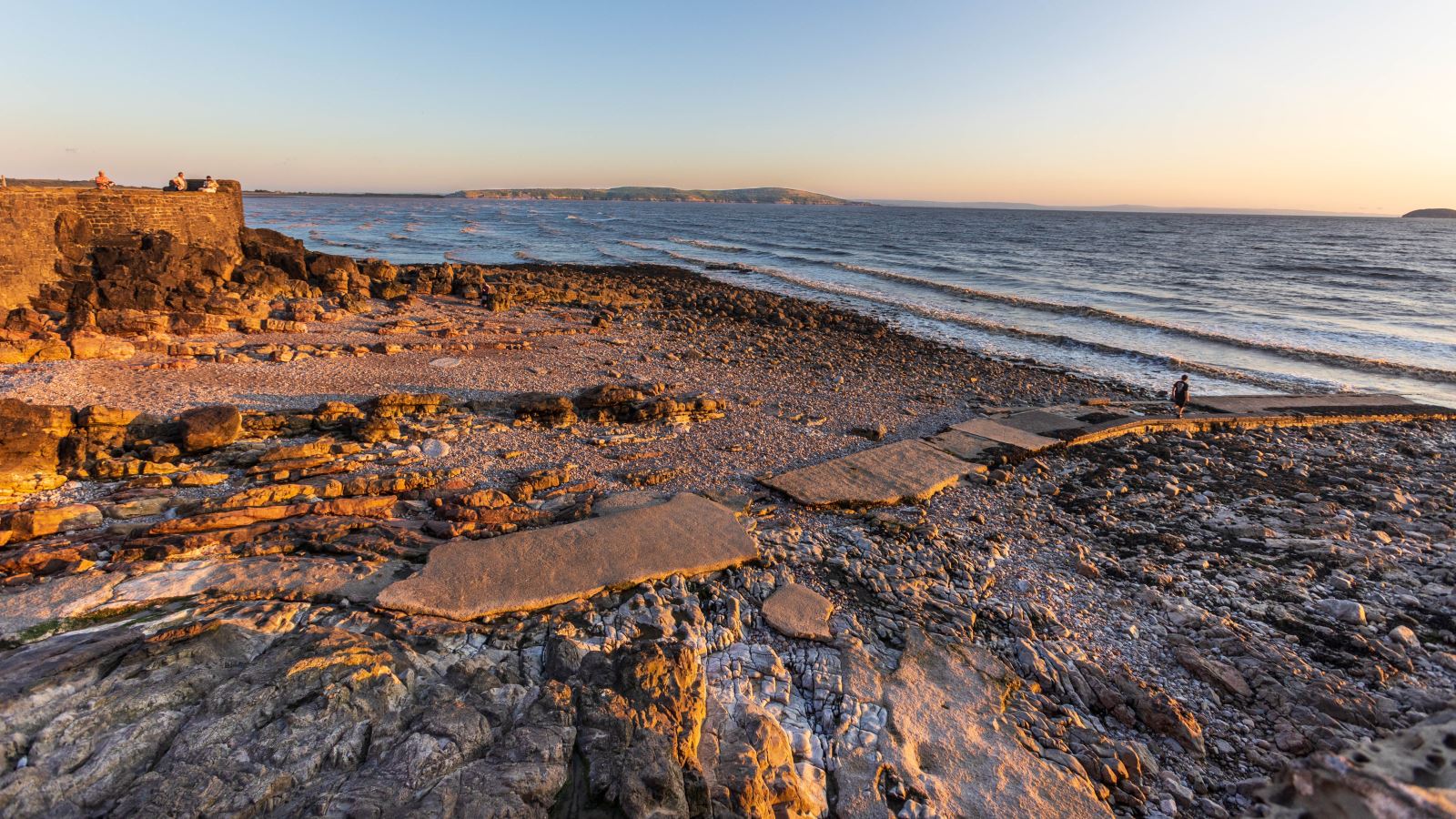
It is hard to believe that beaches used to be segregated. Back in Victorian times this lovely rocky beach used to be for ladies only to protect their modesty while on the other beaches many gentlemen preferred to strip off and swim naked. As time went on, to protect bathers’ modesty, swimmers stepped into the sea from Victorian bathing machines. Like small portable beach huts on wheels, the machines allowed swimmers to wade into the water where, once deep enough, the occupant would disembark into the water before returning to the bathing machine to walk back to the shore and dress after their swim. Weston's bathing machines were all destroyed in the 1903 'Great Gale.'
This little rocky beach remains a popular venue for sunbathers, hardy swimmers and children looking for crabs.
10 Birnbeck: The Beatles Rock
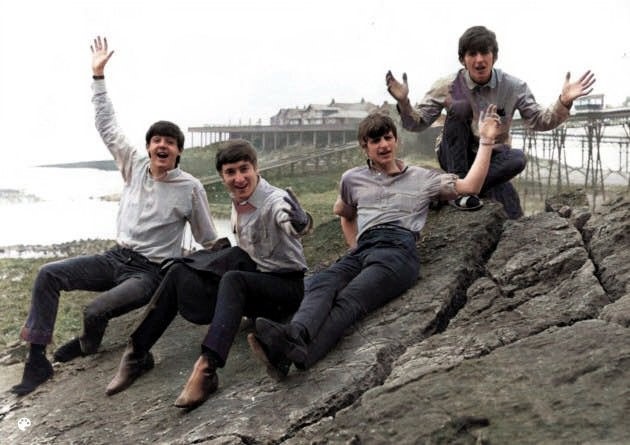
This viewpoint is home to The Beatles Rock, where the Fab Four posed during their 1963 run of shows at Weston’s Odeon Theatre (now the Plaza Cinema). People still come to recreate the photo today. A plaque is situated close to the rock to help you find it. That Beatles photo isn’t the only famous music photo-stop in the town. The cover for the Oasis single Roll With It was shot on Weston beach with the Grand Pier in the background while the band made a stop off before playing at Glastonbury. Weston has also become an increasingly sought-after 'set' for today's film and television industry.
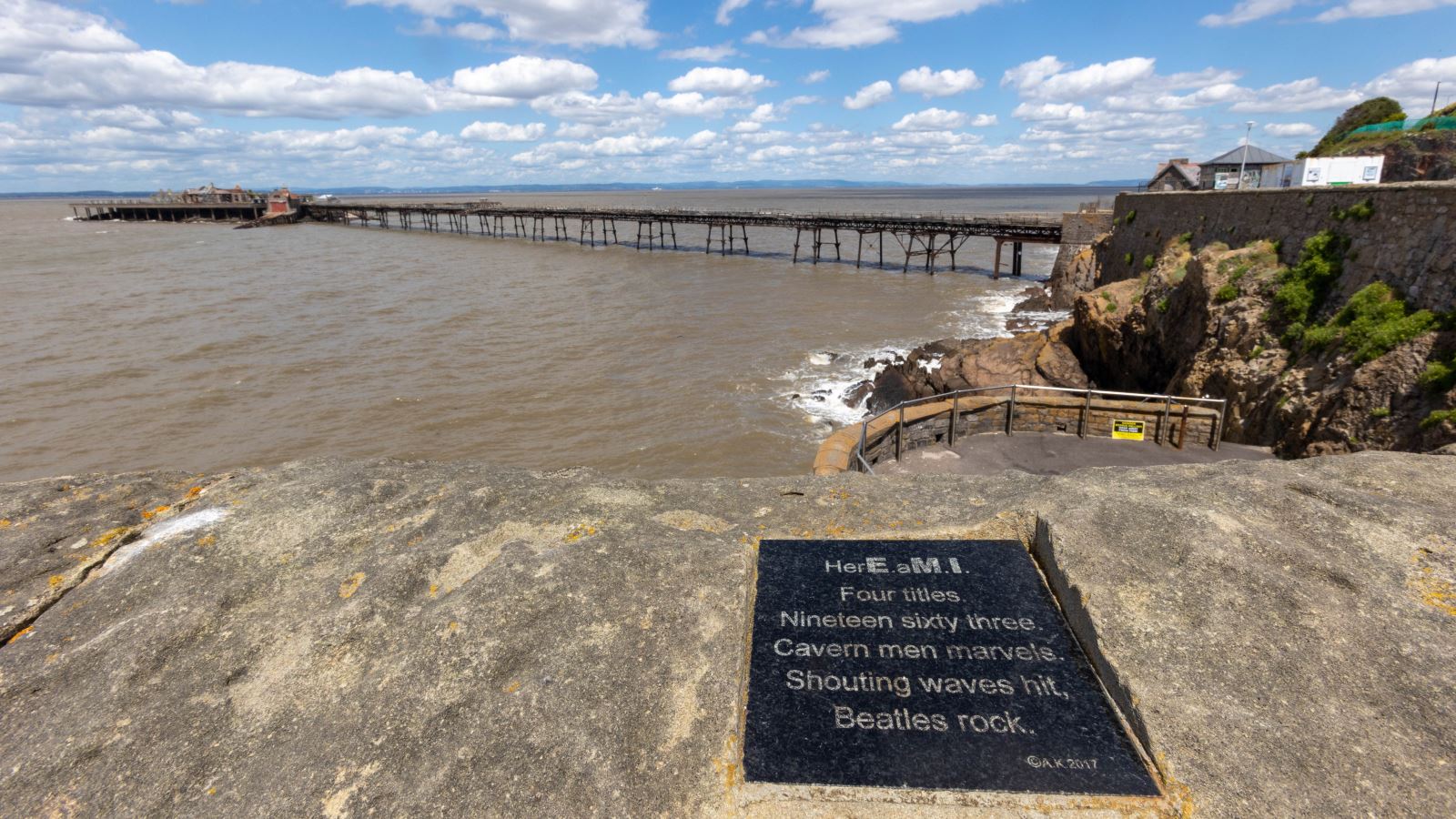
11. Birnbeck Pier: The Pioneer of The Booze Cruise
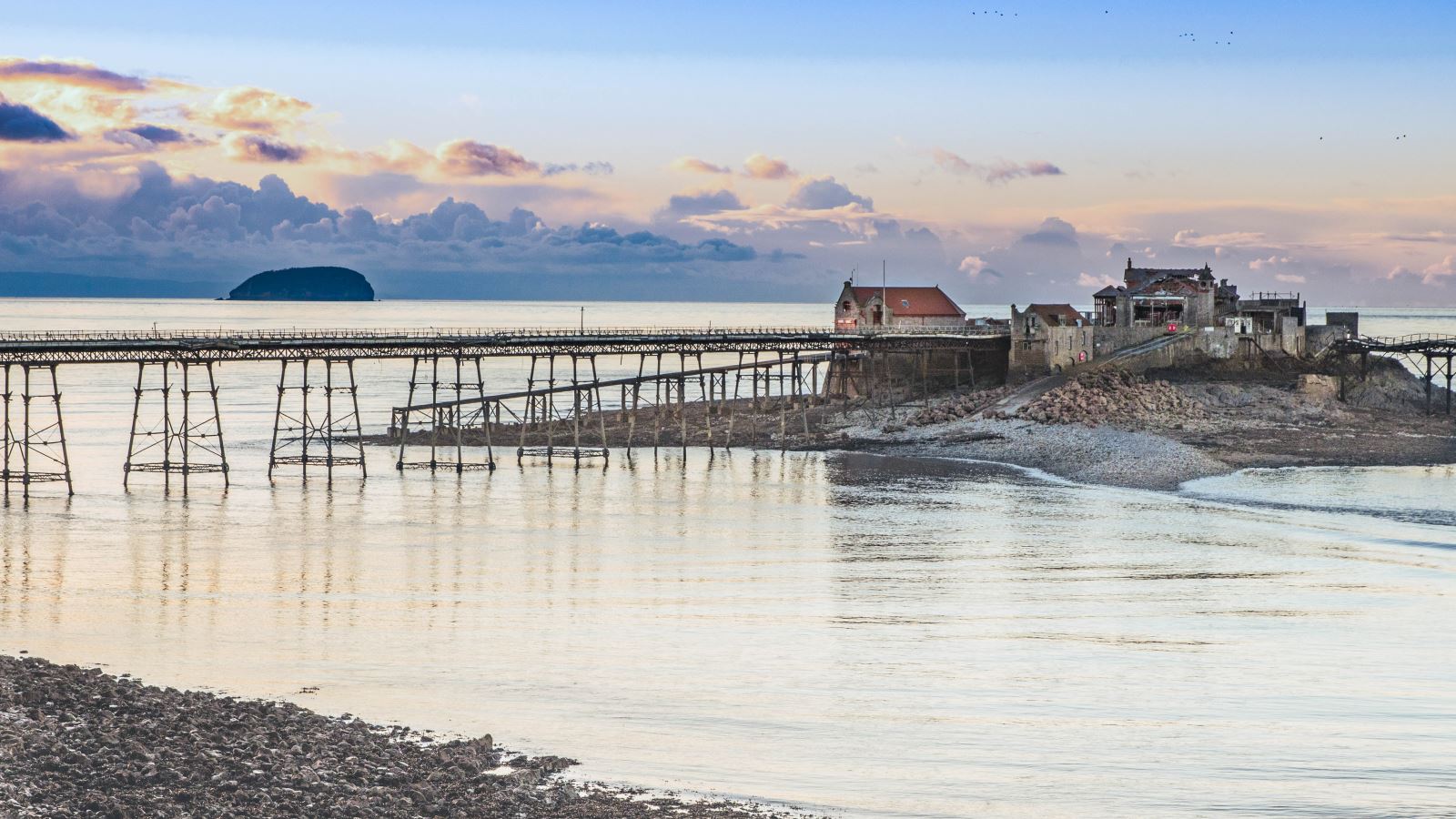
Though currently closed and awaiting restoration, Birnbeck Pier is Weston’s older, moodier sibling to the Grand Pier. It’s the only pier in the UK that links the mainland to an island. In its heyday, it was a landing point for paddle steamers — and a key part of…a unique cross-border story. On Sundays, Welsh visitors would come to Weston by boat — because English licensing laws were more relaxed than those in Wales. A pint in Weston on a Sunday? Worth the trip!
Did you know Weston once had the UK’s busiest internal air route — between Cardiff and Weston? Over the 1937 Whitsun holiday, 2555 passengers travelled on Western Airways in and out of Weston Airport, a world record for that time. You could also fly directly from Weston to Paris. Part of the old airport is now home to the Helicopter Museum - the world’s largest collection of rotorcraft.
Birnbeck Pier was also know as HMS Birnbeck - a place of wartime secrecy - where munitions were trialled.
12. Optional bonus stop Worlebury Hill Fort and exceptional viewpoint
.jpg)
For those willing to venture uphill, via Trinity Steps (off South Road), Worlebury Hill Fort is an Iron Age site offering commanding views over Weston. It's a rare coastal fort with both sea and land vantage points. The walls and ramparts now appear as huge heaps of tumbled stones and are mostly visible at the eastern ramparts. A short walk further into the woods brings you to…
13. The Eisenhower Blue Plaque - Optional bonus stop
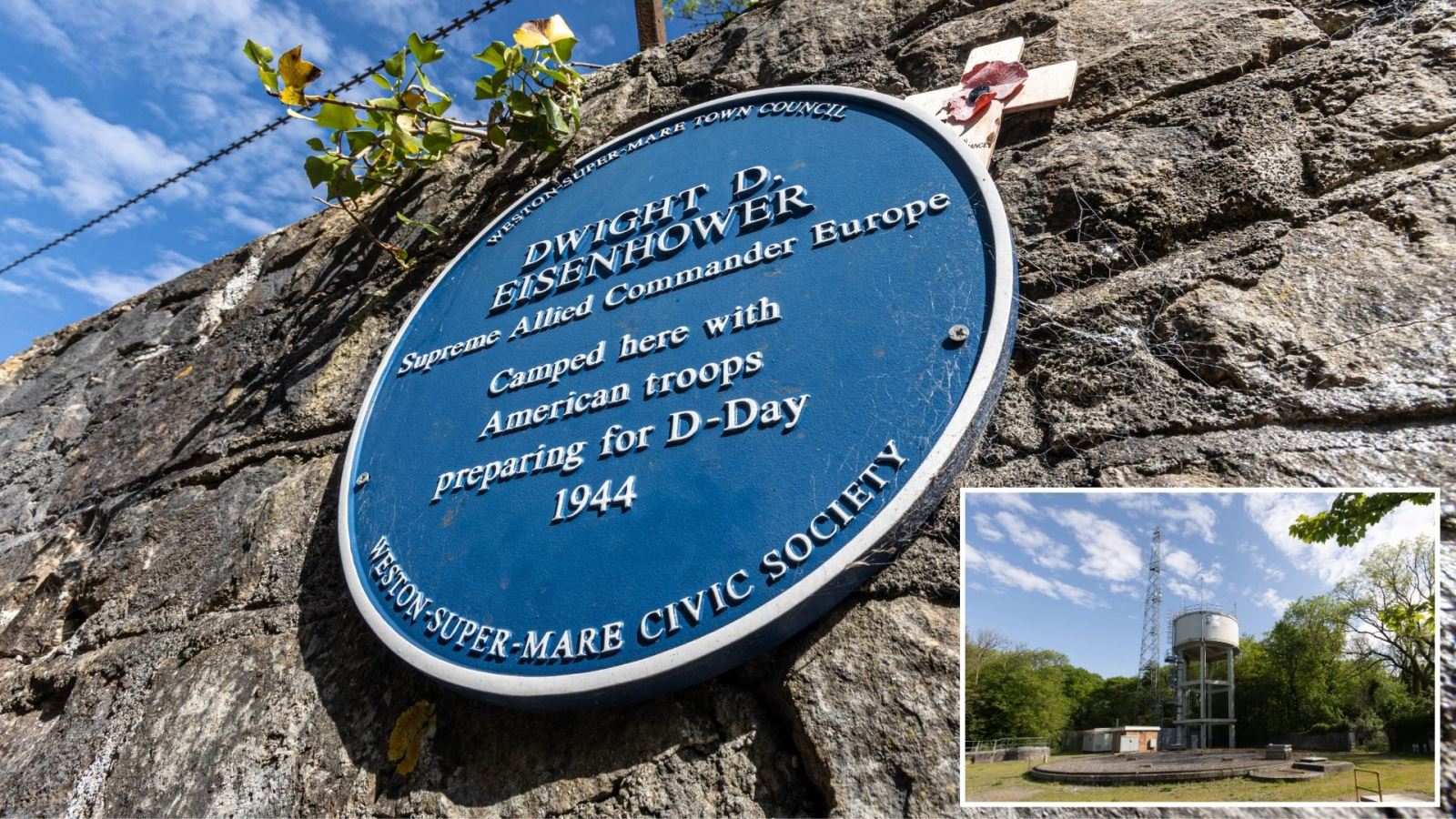
Near the water tower, a blue plaque commemorates the site where General Dwight D. Eisenhower camped in a caravan in Weston Woods in 1944 as he helped prepare troops en-route to the D-Day landings as part of his role as Supreme Allied Commander Europe.
14. The Alfred Leete Blue Plaque – The Poster That Called a Nation To Arms
Alfred Leete, who designed the iconic “Your Country Needs YOU” Kitchener poster, grew up in Weston where his parents ran the Addington Hotel in Madeira Road.
15. Jill's Garden
Jill's Garden in the heart of Grove Park was created by Alan Titchmarsh and the BBC Ground Force team as a tribute to television presenter Jill Dando who grew up in Weston and began her media career at The Weston Mercury newspaper.
16 Banksy’s Pinwheel
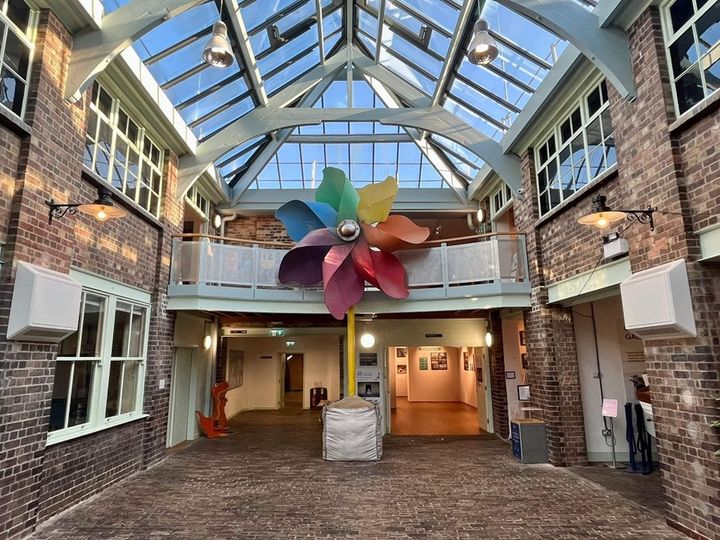
And finally we arrive at Weston Museum (Tuesdays to Saturdays only) which is home to Banksy’s Pinwheel – a relic from the Dismaland exhibition at the Tropicana mentioned earlier in the tour. You will also probably have noticed lots of huge murals as you’ve been walking around Weston-super-Mare. These are not Banksy’s. They are part of Weston’s thriving street art scene and you can take a self-led walking tour of them here. Whilst in the museum do visit Clara's Cottage a full Victorian Cottage and also enjoy something tasty to eat and drink in the popular courtyard cafe.
Our highlights
The History of Soul is back for 2026 and bigger than ever before! Join us for an unforgettable…
Following the phenomenal success of Weston-super-Mare's first ever Seagull Screeching Championship…
He’s the wild man of rock who became a national treasure. Happy Mondays and Black Grape frontman…
THE HISTORY OF ROCK is back and ready to take you on the ultimate journey through the genre's most…
Clevedon Golf Centre is a family run course providing excellent sport and outstanding value in a…
Super Culture launched in August 2023, uniting two of North Somerset’s arts flagships –…
Family theatre this Christmas in Weston-Super-Mare. Filled with laughter, wonder, and joyful…
Dog Friendly | 100 metres from beach Town centre hotel close to the Grand Pier, shops and…
England, 1952. Step right up! The circus has come to town and villagers of…
Make a Splash at Ocean Adventurers Award-Winning Soft Play! Dive into a world of indoor fun at our…
Stay just 0.2 miles from the seafront in a stylish, fully accessible apartment—perfect for business…
Support this hidden gem in the Heart of Weston-super-Mare We may be little, but we have big…
The Grand Pier will be hosting a Darts Tournament, with a £800 guaranteed for the Winner Saturday…
Set within 40 acres of beautiful Somerset countryside, just off the M5 near Weston-super-Mare,…
Weston-super-Mare is located on the Bristol Channel coast at the gateway to the southwest of…
The Stable is a community enterprise centre aimed at supporting start up social enterprises and…
Grove Park is a hidden gem incorporating Jill's Garden which was created by the BBC Ground Force…
Hutton's Famous annual pantomime - This year -Peril in Pantoland
Beachside Holiday Park is family owned and managed by the James family since 1986. The Park has…
Wall Eden Farm with its glamping, log cabins and yurts not only offers accommodation, it also…
Outlet shopping village with restaurants, cafes and kids play area, ideal for a family day out!…
A fine dining experience offering an informal and discreet service with food presented to delight…
The All Seasons, Live! The Hits of Frankie Valli & The Four Seasons Scintillating vocals &…
The Playhouse in-house panto is back for 2025 with the magical fairy tale, Cinderella, starring…

- 1The History of Soul
- 2Weston-super-Mare Seagull Screeching Championship
- 3Shaun Ryder: Happy Mondays and Fridays and Saturdays and Sundays
- 4The History Of Rock
- 5Clevedon Golf Centre
- 6Super Culture
- 7Where did the snow go? Family theatre this Christmas
- 8The Lauriston Hotel
- 9Night Of Mystery – Murder in the Big Top
- 10Ocean Adventurers
- 11Seaside Apartments
- 12The Blakehay Theatre
- 13The Grand Pier Darts Open
- 14Puxton Park
- 15Weston-super-Mare Beach
- 16The Stable Creative Hub
- 17Grove Park & Jill's Garden
- 18Peril in Pantoland
- 19Beachside Holiday Park
- 20Wall Eden Farm Holidays
- 21Clarks Village
- 22Duets
- 23The All Seasons
- 24Cinderella

-
Stay
-
What's On
-
Things to Do
-
Food & Drink
- Shopping
Still here to help -
© 2025 Visit Weston-super-Mare. All Rights Reserved





